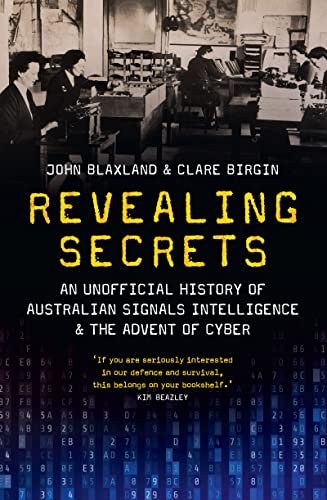SIGINT, Cyber, Information War and 21st Century Deterrence
John Blaxland and Clare Birgin have written an important book.
It was to have been written as the “official history” of Australian signals intelligence, but then became the “unofficial” history.
This part of the story is reviewed by Caroline Overington in a 28 April 2023 review in The Australian.
“The book, Revealing Secrets, was initially commissioned by the former head of the ASD, Mike Burgess, at a cost of $2.2m. It was to be written by John Blaxland, a former Australian Army officer who is now professor of international security and intelligence studies in the Strategic and Defence Studies Centre.”
But then it was not and, on its way, to shape a path to become the “unofficial history.”
But the decision-maker who made the decision to block the official history did us a favor. It forced Blaxland to find his co-author Birgin and it changed the scope of the effort to one more aligned with today’s trajectory on EW/ISR/C2 etc.
They broadened the discussion to cyber and by so doing that took SIGINT out of the historical shadows and made it mainstream.
Because that really is the point – what used to be simply SIGINT used in war or in deterrence has become cyber and part of everyday life and conflict affecting all citizens.
It is no longer just an elite game of shadow Olympics: it is about how we can have a digital society when criminal and adversary states are so committed to stealing, manipulating, and using our data.
That is why blocking a history of SIGINT is ludicrous.
The question of who protects us from the protectors is a key one and watching the collusion of the FBI in the Clinton campaign against Trump certainly is a firm reminder of the risks.
But there is another aspect to their effort which is not discussed by them in the book.
Not only is SIGINT being transformed by the digital society, cyber and information war, but the liberal democracies are building forces to enhance their survival from the precision strike capabilities of peer competitors.
And they are doing this through force distribution.
And force distribution and integrated fires and operations can only work through secure C2 and ISR, and the ability to master counter-ISR.
In other words, rather than having only specialized SIGINT units as in the past, information operations are becoming an embedded part of normal military operations.
Frankly, this is a dramatic change. The decision by Australian Signals Directorate only underscored this point.
The book contains a wealth of interesting historical assessments which make the book worth reading on its own. For example, the discussion of the Australian contribution to the key battle of Midway is really a unknown story. There are many, many others.
But the book’s main contribution in my view is not simply opening of the kimono but opening the aperture with regard to the way ahead.
How do we master the digital age, notably in military operations, and still survive as a democracy?
Blocking the writing of this book only underscores the point.

